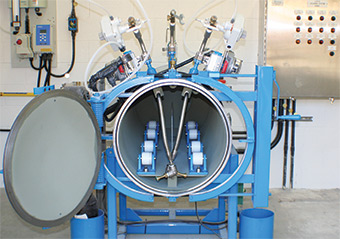
- Chlorine Gas Dispersion Modeling Plus Datasets From#
- Chlorine Gas Dispersion Modeling Series Of Conferences#

Chlorine Gas Dispersion Modeling Series Of Conferences
These datasets can be obtained by contacting Joe ( or Steve ( An overview of the MDA is detailed in a presentation given by Joe Chang at the GMU Conference in 2016:The series of conferences titled, “ Harmonisation within Atmospheric Dispersion Modelling for Regulatory Purposes”, provides descriptions of, and details of how to access, the following datasets: Kincaid, Project Prairie Grass, Round Hill experiment, Bull Run, Cabauw and Green Glow & Hanford, at:There exists a Wiki on Atmospheric Dispersion Modeling with the purpose of pooling experiences gained by dispersion modelers during their work and for the benefit of the international community of atmospheric dispersion modelers, primarily researchers, but also model users. Chem 142 Aut 18 - (3) Wednesday Labs 142 Lab 2 Report: Chemical Models (in-lab).Fifty one different atmospheric transport and dispersion datasets are included in the Modellers’ Data Archive (MDA) developed by Joseph Chang and Steven Hanna. In this tutorial, we are going to learn followings of nitrous oxide gas. Recent focus has been placed on stable boundary layer conditions and the. Modellers’ Data Archive (MDA)In 2018, we continued development of a dense gas dispersion model for prediction of the maximum chlorine concentrations for either an instantaneous puff or a short-duration release from a storage tank blowdown with application to the JRII 20 experiments. Please note that ADMLC does not take responsibility for the quality of the data referenced here it is the responsibility of the data user to determine the “quality” and applicability of the data.

Chlorine Gas Dispersion Modeling Plus Datasets From
These datasets are available from the Datasets drop-down list on the main menu bar. The original REDIPHEM project datasets, plus datasets from URAHFREP (Understanding the dispersion of industrial Releases of Anhydrous Hydrogen Flouride and the associated Risks to the Environment and People) project, can be attained via the following hyperlink (in a folder named Porton):Further data, derived on the basis of wind tunnel experiments considering heavy gas releases on sloping ground, and undertaken by Jürg Müller from the Swiss federal Institute of Technology, can be found via the following hyperlink (along with his thesis):The Heavy Gas Dispersion Trials project at Thorney Island primarily consisted of field experiments on the dispersion of fixed-volume clouds. For further information regarding the REDIPHEM databases contact Morten Note that errors in the description of the BA Hamburg experiments were identified (by HSL in 2016) and these errors are described in the LNG MEP documents (see below). Datasets can be requested by emailing: description of the projects can be found on the Utah Valley University project website:A database detailing dense gas dispersion experiments was developed by way of a projected titled, “REDIPHEM”. Dense Gas DatasetsJack Rabbit I and Jack Rabbit II Projects predominantly considered releases of chlorine but the former project also considered releases of ammonia.
...
The resulting dataset was termed the “Michelstadt” dataset. It is hoped that a description of how to access the Michelstadt dataset will be added in due course. An overview of the MUST dataset can be found at:The Environmental Wind Tunnel Laboratory at the University of Hamburg was used to perform a wind tunnel laboratory experiment in neutral atmospheric conditions. It is hoped that a description of how to access the MUST dataset will be added in due course. A valuable report describing the study can be found at:MUST, is the Mock Urban Setting Test experiment. The data repository is typically accessed via the hyperlink: ,however this link is currently offline.
These datasets can be accessed on request via the ADMLC Secretariat ( is hoped that further details of these datasets will be made available in due course. As part of this study, a number of wind tunnel experiments were performed, describing the atmospheric dispersion resulting from buoyant and neutrally-buoyant area sources, and subsequently measuring concentration and wind pressure on the building envelope, in an effort to better understand how outdoor contaminants ingress into the indoor environment.


 0 kommentar(er)
0 kommentar(er)
